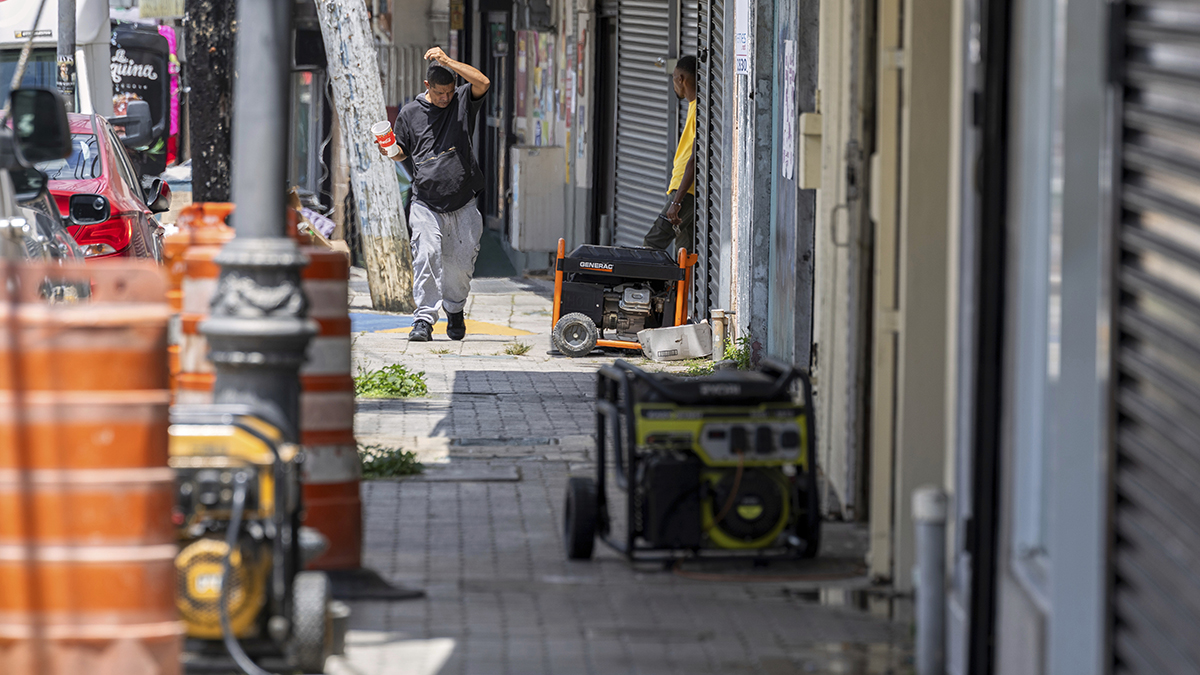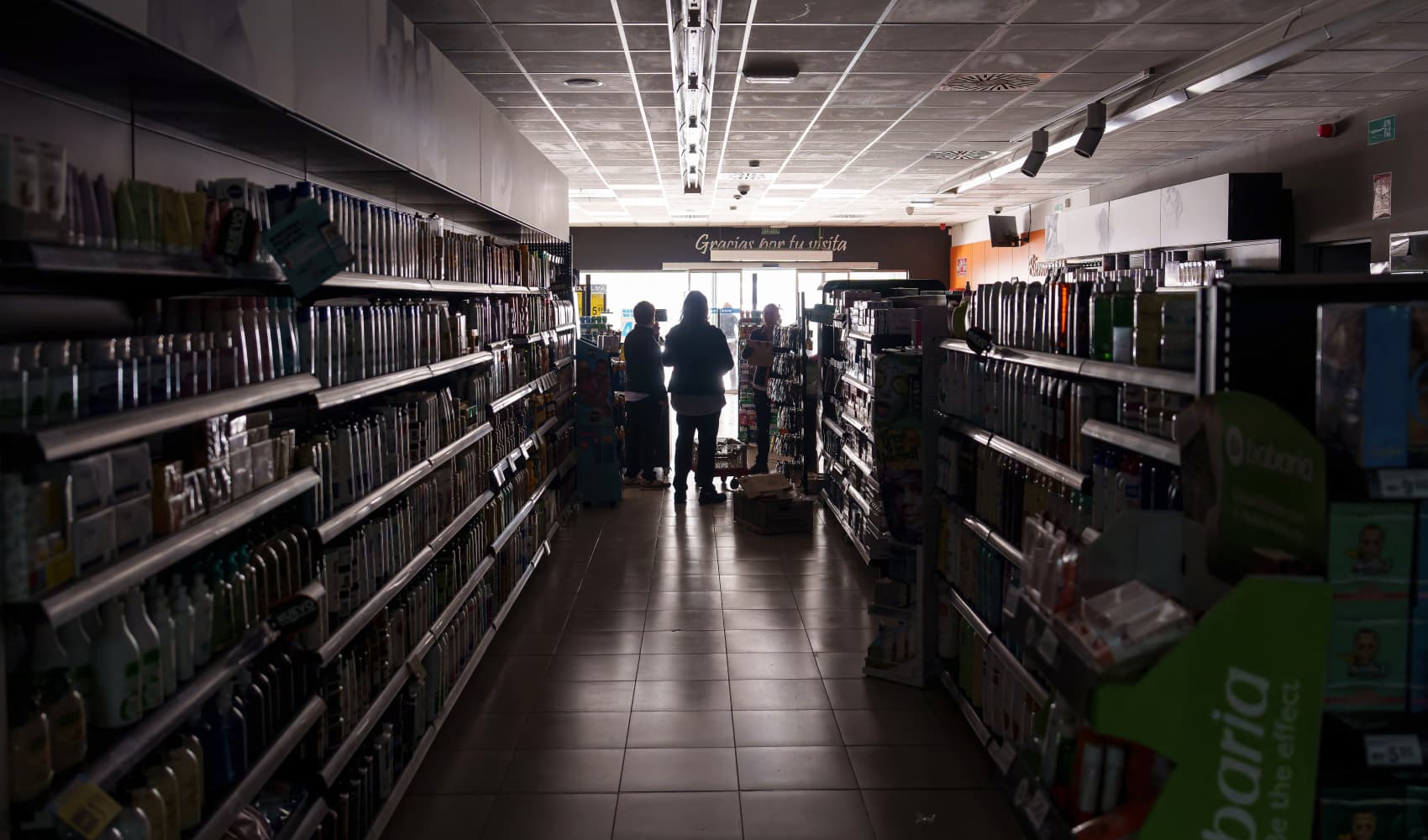Puerto Rico Power Back On! Island Restored After Blackout
Puerto Rico's Power Grid Recovers: Lights Back On After Island-Wide Blackout!
Introduction: A Glimmer of Hope After the Darkness
Remember the feeling of being plunged into darkness? No lights, no internet, no coffee maker humming to life? That was the reality for over a million customers in Puerto Rico earlier this week after a massive island-wide blackout. But here's the good news: Power has been restored to 98.8% of customers as of early Friday! It's a testament to the hard work and dedication of the crews battling to get the lights back on.
Luma Energy's Response: A Race Against Time
Luma Energy, the company responsible for the transmission and distribution of power in Puerto Rico, has been working tirelessly to restore electricity. They report that more than 1.45 million customers had power restored in less than 48 hours. That's no small feat considering the scale of the outage. It’s like trying to untangle a giant knot of Christmas lights – except with much higher stakes!
The Challenge of Generation Limits
While the vast majority of customers are back online, Luma Energy has issued a warning: "Some customers may continue to experience temporary outages due to limited generation." What does this mean? Essentially, the power plants might not be producing enough electricity to meet the entire island's demand just yet. Think of it as trying to fill a swimming pool with a garden hose – it will eventually get full, but it will take some time, and you might have to pause occasionally.
Governor González's Perspective: Frustration and a Call for Improvement
Gov. Jenniffer González expressed both relief and frustration with the situation. While acknowledging that power has been restored for most, she pointed out that over 21,400 customers were still without electricity Friday morning, citing other, unidentified issues. "Obviously, Luma still has work to do," she said. "It is a shame for our people… that we have such an insufficient, mediocre system." Her words highlight the deep-seated challenges facing Puerto Rico's infrastructure.
The Underlying Problem: An Aging Infrastructure
Let’s be honest, Puerto Rico's power grid has been plagued by issues for years. Decades of underinvestment, natural disasters, and bureaucratic hurdles have left it vulnerable and unreliable. The blackout underscores the urgent need for a comprehensive overhaul of the island's energy infrastructure. It's like trying to drive a car that's been running on fumes and duct tape for far too long – eventually, it's going to break down.
Beyond the Blackout: The Daily Reality of Power Outages
It’s easy to get caught up in the drama of a large-scale blackout, but it's important to remember that power outages are a relatively common occurrence in Puerto Rico. Normally, a couple thousand customers are temporarily without power every week for various reasons. This constant uncertainty takes a toll on residents and businesses alike. Can you imagine constantly worrying about whether your fridge will be working tomorrow?
The Impact on Businesses: A Ripple Effect
Power outages aren't just inconvenient; they can be devastating for businesses, especially small ones. Lost revenue, spoiled inventory, and damaged equipment can all add up quickly. A stable and reliable power grid is essential for economic growth and stability. It’s the foundation upon which businesses can thrive.
The Road to Recovery: What Needs to Happen Next?
Restoring power is just the first step. The real challenge lies in building a more resilient and sustainable energy system for Puerto Rico. What does that look like? Here are a few key areas that need attention:
Investing in Modernization: A Smart Investment
Upgrading the power grid with modern technology is crucial. This includes replacing aging infrastructure, investing in smart grid technology, and improving grid resilience to withstand natural disasters. It's like upgrading from a flip phone to a smartphone – a necessary step for staying connected in the 21st century.
Embracing Renewable Energy: A Greener Future
Diversifying the energy mix with renewable sources like solar and wind power can reduce reliance on fossil fuels and create a more sustainable energy future. Puerto Rico has abundant sunshine and wind resources, making it an ideal location for renewable energy development. Think of it as tapping into a free and abundant resource – the sun and wind are always there!
Decentralizing the Grid: A More Resilient System
Creating a more decentralized power grid with microgrids and distributed generation can improve resilience and reduce the impact of large-scale outages. A decentralized system is less vulnerable to single points of failure. It's like having multiple backup generators instead of relying on a single, large power plant.
Community Involvement: A Collaborative Approach
Engaging local communities in the planning and development of energy projects can ensure that they meet the specific needs and priorities of residents. This includes providing opportunities for community ownership and participation in renewable energy projects. It's about empowering communities to take control of their energy future.
The Human Cost: More Than Just Electricity
It's easy to get lost in the technical details of power grids and energy policies, but it's important to remember the human cost of these outages. Lack of electricity can disrupt lives, impact healthcare, and create safety concerns. Think about the elderly or those with medical conditions who rely on electricity for life-sustaining equipment. It’s a matter of life and death.
The Emotional Toll: Stress and Uncertainty
The constant threat of power outages can take an emotional toll on residents, creating stress and uncertainty. It’s like living under a dark cloud, never knowing when the lights will go out again. Building a reliable power grid is not just about economics and technology; it's about improving the quality of life for the people of Puerto Rico.
Lessons Learned: Moving Forward with Purpose
Every blackout is a learning opportunity. What lessons can be learned from this recent outage? Improved communication, better coordination between agencies, and a greater focus on preventative maintenance are all essential. It’s about identifying the weaknesses in the system and taking steps to address them before the next crisis strikes.
Accountability and Transparency: Ensuring Trust
Holding Luma Energy and other stakeholders accountable for their performance is crucial for building trust and ensuring that improvements are made. Transparency in decision-making and project implementation is also essential. It's about ensuring that the power grid is managed in a responsible and efficient manner.
Conclusion: Brighter Days Ahead (Hopefully!)
The restoration of power to nearly all customers in Puerto Rico is a welcome relief after a challenging week. However, the blackout serves as a stark reminder of the urgent need to modernize and strengthen the island's energy infrastructure. Investing in a resilient, sustainable, and decentralized energy system is essential for ensuring a brighter and more prosperous future for Puerto Rico. Let's hope this is a turning point towards a more reliable and equitable energy future for everyone.
Frequently Asked Questions (FAQs)
Here are some frequently asked questions about the recent blackout in Puerto Rico:
- What caused the island-wide blackout in Puerto Rico?
While the exact cause is still under investigation, initial reports suggest a failure in the transmission system triggered the outage. The aging infrastructure likely contributed to the severity of the event.
- How long did it take to restore power to most customers?
Luma Energy reports that power was restored to 98.8% of customers in less than 48 hours after the outage began.
- Why are some customers still experiencing outages?
Luma Energy has warned that limited generation capacity may cause temporary outages for some customers. There may also be isolated issues requiring individual attention.
- What is being done to prevent future blackouts?
The government and Luma Energy are working on upgrading the power grid, investing in renewable energy, and decentralizing the system to improve resilience and prevent future large-scale outages.
- How can I report a power outage in my area?
You can report a power outage to Luma Energy through their website, mobile app, or by calling their customer service hotline.

